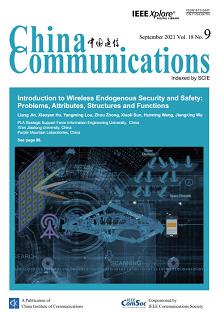Dinesh Kumar, Rajiv Kumar, Neeru Sharma
2021, 18(9): 236-248.
This paper presents a halfway signaling exchange shared path protection (HSE-SPP) on the backup route for a fast connection recovery strategy. In the proposed HSE-SPP, a pre-assigned intermediate node on the backup route is chosen for signaling exchange. When connection fails, source and destination nodes simultaneously generate backup connection setup messages to the pre-assigned intermediate node on the reserved backup route. At the intermediate node, signaling process occurs, and acknowledgment is generated for data transmission to the respective end nodes. Consequently, connection recovery time by applying HSE-SPP becomes very low. Simulations are performed for network parameters and results are verified with existing strategies. The average recovery time (RT), bandwidth blocking probability (BBP), bandwidth provisioning ratio (BPR), and resource overbuild (RO) ratio of HSE-SPP for ARPANET is 13.54ms, 0.18, 3.02, 0.55, and for dedicated path protection (DPP) are 13.20ms, 0.56, 6.30, 3.75 and for shared path protection (SPP) 22.19ms, 0.22, 3.23, 0.70 respectively. Similarly, average RT, BBP, BPR and RO of HSE-SPP for COST239 are 8.33ms, 0.04, 1.64, 0.26, and for DPP 4.23, 0.47, 3.50, 2.04, and for SPP 11.81, 0.08, 1.66, 0.27 respectively. Hence, results of the proposed strategy are better in terms of RT, BBP, BPR, and RO ratio.
